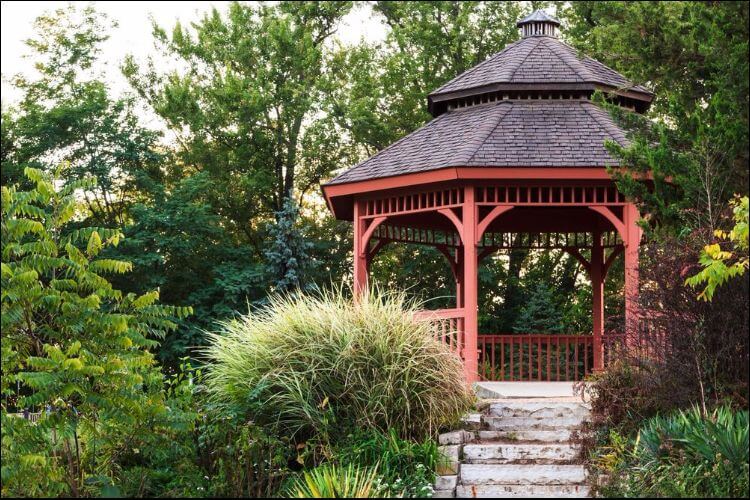If you’re a thrill-seeking dirt bike enthusiast, there’s nothing quite like having your own backyard dirt bike track. Not only does it provide endless hours of fun and excitement, but it also allows you to practice and improve your riding skills in the comfort of your own home.
Building a backyard dirt bike track may seem like a daunting task, but with the right tools, materials, and guidance, you can create a safe and thrilling track that will keep you entertained for years to come. In this article, we will guide you through the step-by-step process of building your own backyard dirt bike track.
From assessing your space and choosing the perfect location to installing safety features and maintaining your track, we will provide you with all the information you need to create a track that is both exhilarating and safe.
So, grab your gear and get ready to embark on an adventure that will take your dirt bike riding to the next level!
Quick Summary
- Assess the space and choose the perfect location for the backyard dirt bike track, considering privacy, noise disturbances, and safety.
- Prioritize safety during the construction process by clearing obstacles, incorporating safety features, and wearing proper safety gear.
- Regularly inspect and maintain the track for potential hazards or damage, focusing on ground preparation, drainage, and adjusting jumps, berms, and obstacles.
- Continuously evaluate and fine-tune the track layout, considering the skill level of riders, adding new features, and gradually increasing track difficulty with upgrades.
Assess Your Space and Choose the Perfect Location
Now that you’ve assessed your space and chosen the perfect location, it’s time to start mapping out your backyard dirt bike track. Safety should always be a top priority when building your track, so let’s make sure we do it right.
First things first, maximize the space you have available. Take into account any trees, rocks, or other obstacles that may need to be removed or relocated to create a safe riding area. Clearing the area will help prevent any accidents or injuries.
Next, consider your neighbors. It’s important to be mindful of their privacy and to minimize any noise disturbances. If possible, position your track in a way that reduces the impact on neighboring properties. You can also install sound barriers, such as fences or vegetation, to help dampen any noise generated from your dirt bike activities.
When planning your track, keep in mind the safety of yourself and others. Incorporate safety features like jumps with appropriate landing zones, well-defined boundaries, and signage to indicate the direction of travel. Additionally, ensure that the track is free of any hazardous objects or debris.
By following these guidelines, you can create a backyard dirt bike track that maximizes space, considers your neighbors, and most importantly, provides a safe riding experience for everyone involved. Have fun and ride responsibly!
Gather the Necessary Tools and Materials
First, you’ll need to round up all the essential tools and materials to get started on creating your own thrilling outdoor course. To ensure the safety and success of your backyard dirt bike track, it’s important to choose the right soil and clear the area properly. Here are three items you’ll need to gather:
-
Soil: Choose a soil that’s well-draining and compactable. Avoid using sandy or clayey soil, as they can lead to poor track conditions and erosion. Look for loamy soil, which has a balanced mixture of sand, silt, and clay, providing good traction and stability.
-
Shovels and Rakes: These tools’ll come in handy for clearing the area of any debris, rocks, or vegetation. Use the shovels to remove larger obstacles and the rakes to smooth out the surface, creating an even track.
-
Watering System: Installing a watering system is crucial for maintaining the moisture level of the track. This’ll help prevent excessive dust and provide better grip for your bike. Consider using a sprinkler system or a hose with a gentle spray attachment.
Remember, safety should be your top priority when building your backyard dirt bike track. By choosing the right soil and clearing the area properly, you’ll create a safe and enjoyable riding experience for yourself and others.
Plan and Design Your Track Layout
To create an exhilarating outdoor course, picture yourself zipping through thrilling twists and turns as you plan and design the layout for your ultimate dirt bike adventure. When planning your track layout, it’s important to consider various track features that will enhance your riding experience while prioritizing safety precautions.
To help you visualize the layout, here’s a table outlining different track features you can incorporate into your backyard dirt bike track:
| Track Feature | Description | Safety Precautions |
|---|---|---|
| Jumps | Provide excitement and airtime for riders | Ensure proper landing areas and smooth transitions to prevent accidents |
| Berms | Banked turns that allow for increased speed and control | Construct berms with a safe angle to prevent riders from losing control |
| Whoops | Series of small bumps that challenge riders’ balance and control | Space whoops evenly to avoid unpredictable riding conditions |
| Obstacles | Logs, tires, or rocks that add technical challenges | Clearly mark obstacles and ensure they are not excessively dangerous |
Remember, safety should always be a top priority. Make sure to wear appropriate safety gear, such as helmets, goggles, and protective clothing. Additionally, regularly inspect your track for any potential hazards or damage that could cause accidents.
By incorporating these track features and taking safety precautions, you can design a thrilling yet safe backyard dirt bike track that will provide endless enjoyment for you and your friends. Happy riding!
Prepare the Ground and Level the Terrain
Once you’ve envisioned your ideal dirt bike course layout, you can begin preparing the ground and ensuring the terrain is leveled for optimal riding conditions.
Ground preparation is crucial to create a safe and enjoyable track. Start by removing any debris, rocks, or vegetation that may pose a hazard. Clearing the area will help prevent accidents and injuries.
Next, use a tractor or a skid steer with a bucket attachment to level the ground. This will help eliminate any bumps or uneven spots that could cause riders to lose control of their bikes. It’s important to pay attention to the slope of the track and make sure it’s suitable for riding. A gentle slope ensures proper drainage and prevents water from pooling on the track after rain.
Take your time when leveling the terrain, as it’s essential for the track’s overall safety and performance. By properly preparing the ground and leveling the terrain, you’ll create a dirt bike track that offers a smooth and secure experience for riders of all skill levels.
Build Jumps, Berms, and Other Obstacles
Get ready to add some excitement to your course by creating jumps, berms, and other obstacles that’ll challenge your riding skills. But before you start building, make sure you’ve got the right tools and equipment. Here are four important steps to follow when building jumps, berms, and other obstacles for your backyard dirt bike track:
-
Plan your jumps and berms carefully: Take into consideration the skill level of the riders who’ll be using the track. Make sure the jumps aren’t too steep or too high, and that the berms are wide enough for safe turns.
-
Build sturdy jumps: Use dirt, rocks, or wooden planks to create your jumps. Make sure they’re well-packed and firmly anchored to the ground to prevent them from shifting or collapsing during use.
-
Create safe berms: Build up the sides of the track with dirt to create berms for safe turning. Make sure the berms are smooth and have a gradual slope to avoid accidents.
-
Regular maintenance: To ensure the safety of the riders, regularly inspect and maintain your jumps, berms, and other obstacles. Fill in any holes or cracks, and remove any debris or loose rocks that could pose a hazard.
By following these steps and incorporating regular dirt bike maintenance and track maintenance, you can create a backyard dirt bike track that’s not only thrilling but also safe for riders of all skill levels.
Install Safety Features and Protective Measures
Now that you’ve built all the jumps, berms, and other obstacles for your backyard dirt bike track, it’s time to focus on installing safety features and protective measures to ensure a safe riding experience. Safety should always be a top priority when it comes to any outdoor activity, especially dirt biking.
First and foremost, make sure you and anyone who’ll be riding on the track have the appropriate safety gear. This includes a well-fitting helmet, goggles, gloves, and sturdy boots. Wearing the proper gear can greatly reduce the risk of injuries in case of any accidents or falls.
In addition to safety gear, regular track maintenance is crucial. Inspect the track regularly for any hazards such as loose rocks, tree branches, or debris. Keep the track clear and clean to prevent any accidents or damage to both the riders and the bikes.
Furthermore, it’s important to set clear rules and guidelines for riding on the track. Establish speed limits and ensure that riders are aware of them. Encourage riders to ride within their skill level and avoid reckless behavior.
By incorporating these safety features and following proper track maintenance, you can create a backyard dirt bike track that provides a thrilling yet safe riding experience for everyone involved. Remember, safety first!
Test and Adjust Your Track for Optimal Performance
Ensure that you test and fine-tune your track to maximize its performance and provide an exhilarating riding experience. Here are four important testing techniques and track adjustments to consider:
-
Evaluate the jumps: Start by testing the jumps on your track. Make sure they’re safe and provide enough height and distance for the riders. Adjust the size and shape of the jumps as needed to ensure a smooth and enjoyable ride.
-
Test the berms: Berms are crucial for maintaining control while cornering. Ensure that the berms on your track are properly constructed and allow riders to navigate turns safely at high speeds. Adjust the angle and height of the berms to optimize their performance.
-
Check the rhythm sections: Rhythm sections are a series of jumps that riders can navigate in a flowing motion. Test these sections to ensure that they’re well-spaced and allow riders to maintain their rhythm. Make adjustments to the spacing and height of the jumps to create a satisfying flow.
-
Fine-tune the track layout: Continuously evaluate the overall layout of your track. Make adjustments to the track’s shape and flow to improve safety and maximize the riding experience. Consider adding additional features like whoops or tabletops to enhance the challenge and excitement.
By testing and adjusting your track using these techniques, you can create a safe and thrilling riding experience for yourself and others. Remember to always prioritize safety and make necessary adjustments to optimize performance.
Maintain and Upgrade Your Dirt Bike Track Over Time
As time passes, it’s important to consistently maintain and upgrade your track to ensure its longevity and keep riders engaged.
Maintaining track safety should be a top priority. Regularly inspect the track for any potential hazards such as loose rocks, tree branches, or erosion. Clear any debris and fix any damages immediately to prevent accidents.
Additionally, it’s crucial to check the condition of the jumps and berms regularly. Make sure they’re stable and well-built to avoid any collapses or accidents.
To increase track difficulty, you can make gradual upgrades over time. Start by adjusting the layout of the track. Add new obstacles such as tabletops, whoops, or rhythm sections. These additions will challenge riders and keep them excited about riding on your track.
You can also modify the existing jumps by changing their angles or heights. This will require riders to adapt their techniques and skills, making the track more thrilling.
Remember, safety should always come first. When upgrading your track, make sure to consider the skill level of the riders who’ll be using it. Gradual changes will allow riders to progress and improve their skills gradually, without risking their safety.
By consistently maintaining and upgrading your dirt bike track, you can ensure its longevity and provide an enjoyable and safe riding experience for all.
Frequently Asked Questions
How much land do I need to build a backyard dirt bike track?
To build a safe backyard dirt bike track, you’ll need enough land to accommodate the track layout and ensure rider safety. The required land size will depend on the specific track design and construction costs may vary accordingly.
What are the essential tools and materials needed to build a dirt bike track?
To build a dirt bike track, you’ll need essential tools like a shovel, rake, compactor, and a wheelbarrow. Materials like dirt, gravel, and wooden boards can be cost effective options. Following best practices ensures safety.
How do I plan and design a layout for my dirt bike track?
When planning and designing a layout for your dirt bike track, consider the track features and layout that promote safety. Incorporate jumps, berms, and straightaways to create a challenging yet safe track for riders of all skill levels.
What steps should I take to prepare the ground and level the terrain for my track?
To prepare the ground and level the terrain for your track, start by removing any rocks, debris, or obstacles. Then, use a tractor or skid steer to level the surface. Ensure the ground is smooth and even to prevent accidents and promote safety.
Are there any safety measures or features I should include when building a dirt bike track?
When building a dirt bike track, it’s crucial to prioritize safety. Ensure the track is constructed using durable dirt bike track construction materials and provide essential safety gear for dirt bike riders.
Conclusion
So there you have it, you now know how to build a backyard dirt bike track. With a little planning, preparation, and hard work, you can create a thrilling and challenging track right in your own backyard.
Remember to assess your space, gather the necessary tools and materials, design your layout, prepare the ground, build the obstacles, and install safety features. Don’t forget to test and adjust your track for optimal performance, and continue to maintain and upgrade it over time.
Now, get out there and start building!







